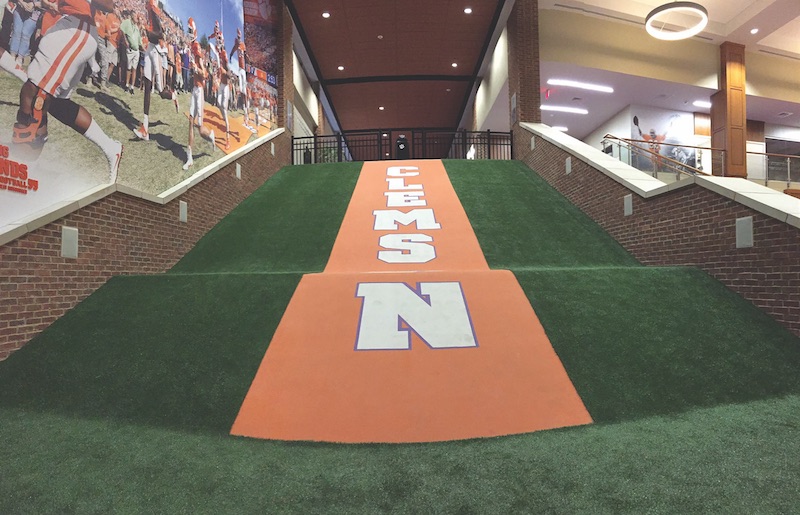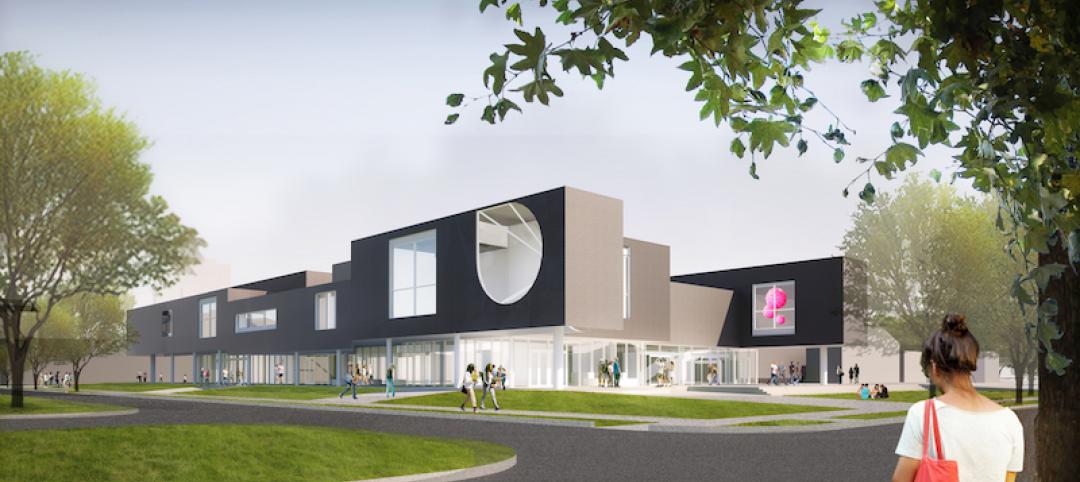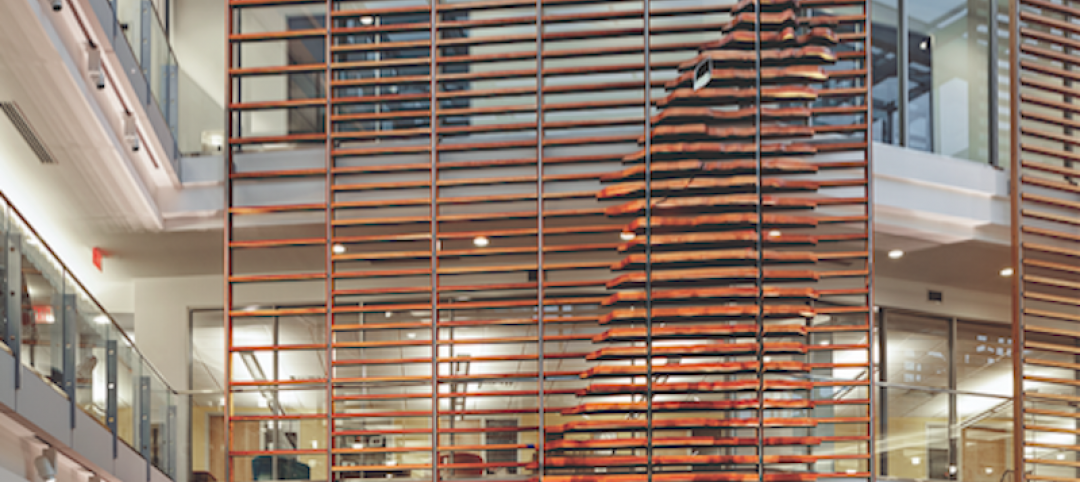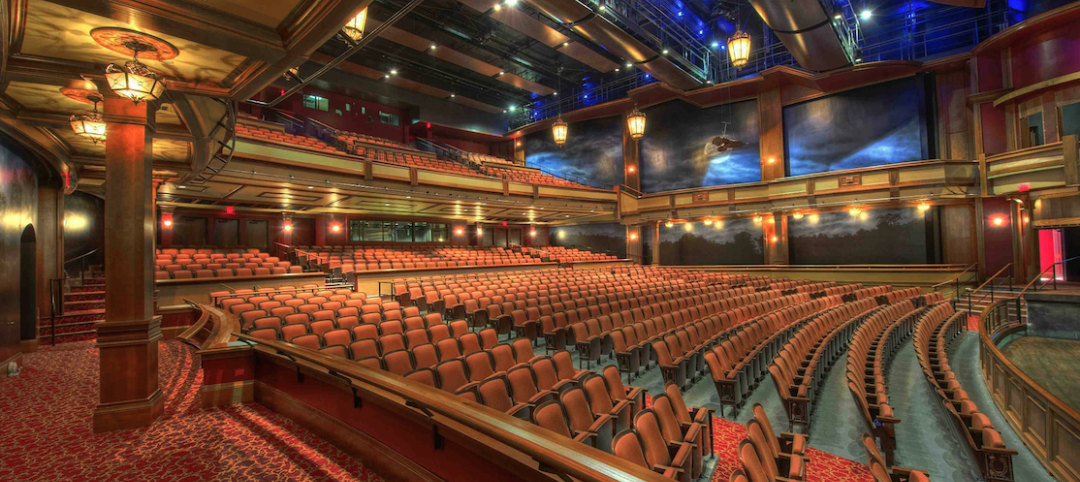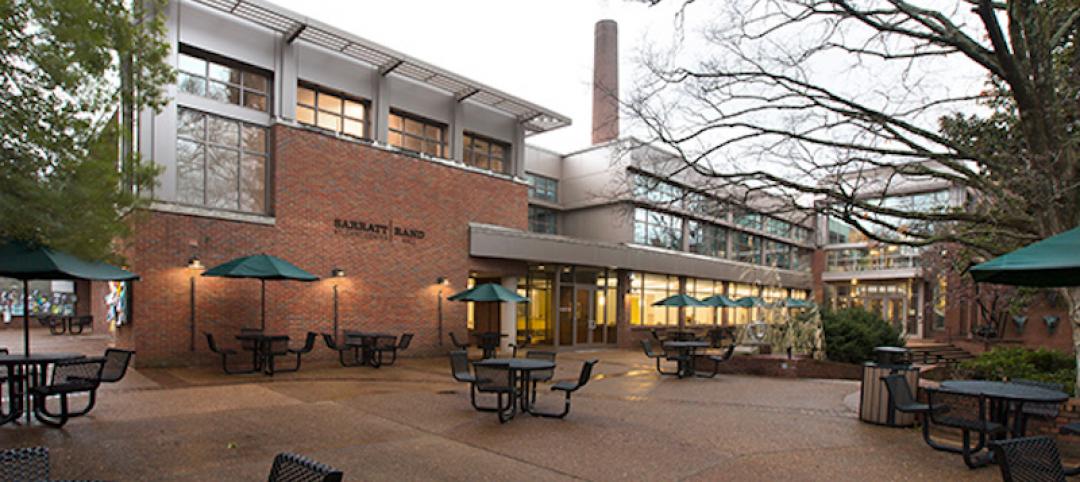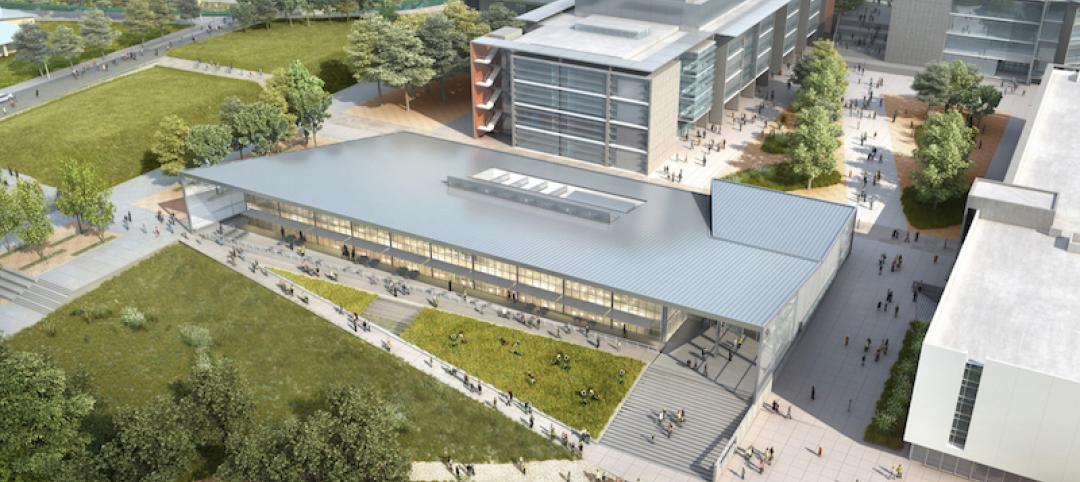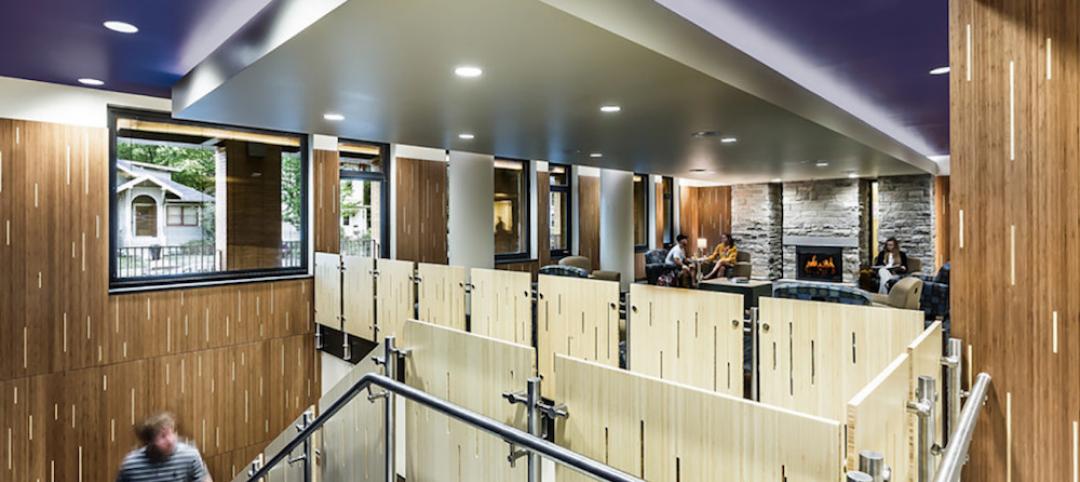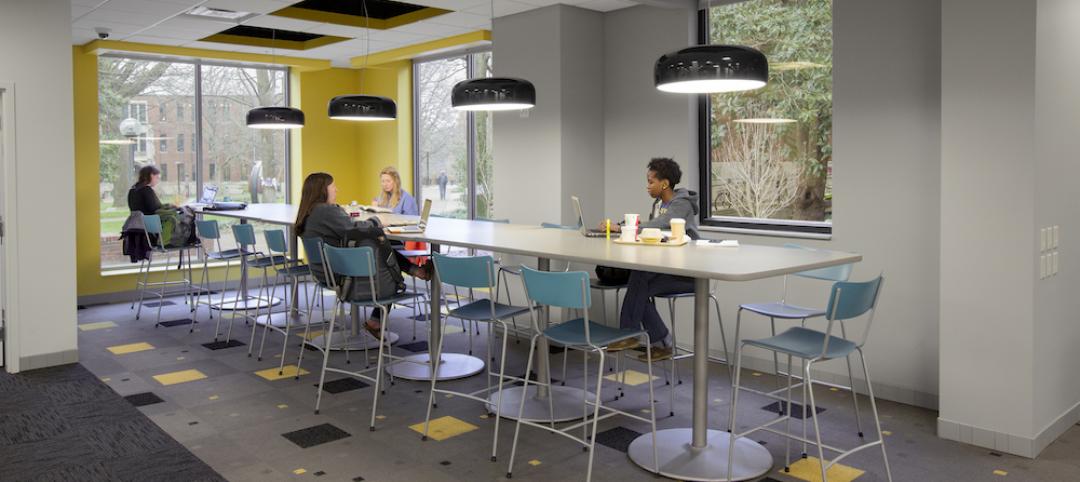Two-lane bowling alley, wiffle ball field, nine-hole mini-golf course, 24-seat HD movie theater, indoor slide, VR studio. Clemson University has certainly upped the ante when it comes to elite Division I football recruiting with its newly christened $55 million Football Operations Complex. The 142,500-sf facility, which opened just three weeks after Clemson’s national championship win over the University of Alabama, adjoins the indoor practice facility and outdoor practice fields, consolidating football operations into one complex. It is the largest football-specific facility in the U.S.
Designed by HOK (sports design architect) and GMC (architect of record), the facility serves as a home away from home for players and staff, with amenities that allow the student-athletes to train, study, and unwind in the same place. Performance spaces include hydrotherapy rooms (both polar and thermal plunge pools), a lap pool, steam room, weight and fitness training centers, a 175-seat auditorium, NFL scout room, and technology for weight tracking and body composition.
Additional leisure and entertainment amenities: outdoor basketball court, barbershop, volleyball and bocce courts, Gatorade fuel bar, and a Nike gear and championship display. It even has spaces dedicated for family visits, like an outdoor kitchen and grilling area, outdoor lounges with gas fire pits, a secluded bonfire pit with rocking chairs, a 20x20-foot inflatable screen for outdoor movies, an integrated family lounge in the player’s locker room, and a covered patio for 75 people.
DPR Construction was the GC on the project.
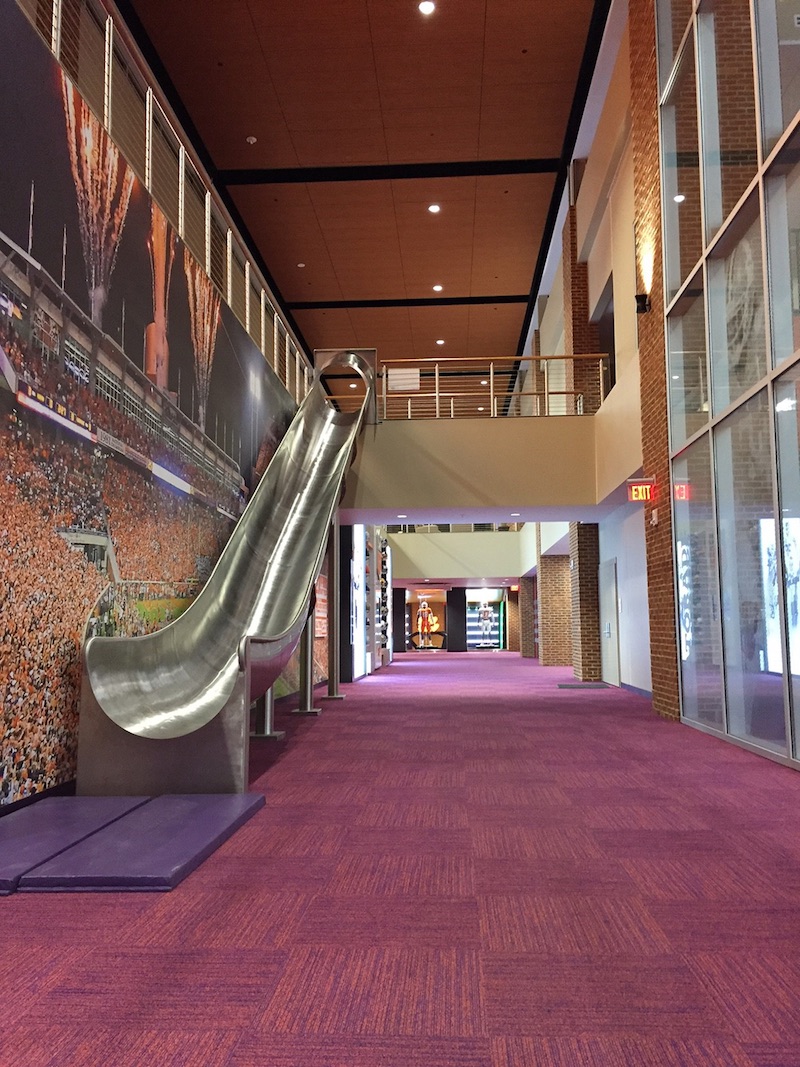 Courtesy HOK.
Courtesy HOK.
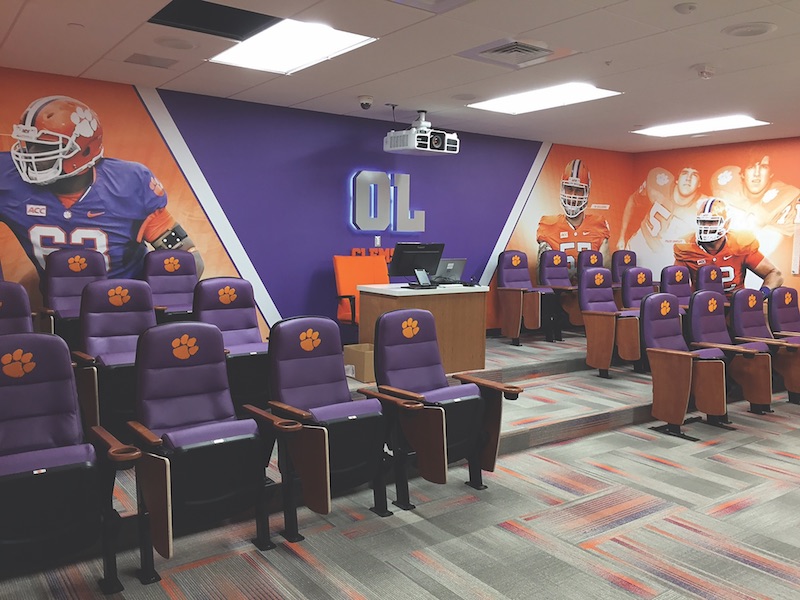 Courtesy HOK.
Courtesy HOK.
Related Stories
University Buildings | Aug 16, 2016
New images of Rice University’s Moody Center for the Arts revealed by Michael Maltzan Architecture
The arts center will foster creativity for making and presenting works across all disciplines
| Aug 10, 2016
UNIVERSITY GIANTS: Facing money woes, the nation's colleges double down on innovative ideas
Budget constraints are compelling some public institutions to pursue alternative methods of financing their major building projects.
| Aug 9, 2016
Top 70 University Engineering Firms
AECOM, WSP | Parsons Brinckerhoff, and Jacobs top Building Design+Construction’s annual ranking of the nation’s largest university sector engineering and E/A firms, as reported in the 2016 Giants 300 Report.
| Aug 9, 2016
Top 100 University Construction Firms
Turner Construction Co., The Whiting-Turner Contracting Co, and Skanska USA top Building Design+Construction’s annual ranking of the nation’s largest university sector construction and construction management firms, as reported in the 2016 Giants 300 Report.
| Aug 9, 2016
Top 100 University Architecture Firms
Gensler, Perkins+Will, and CannonDesign top Building Design+Construction’s annual ranking of the nation’s largest university sector architecture and A/E firms, as reported in the 2016 Giants 300 Report.
University Buildings | Aug 5, 2016
How to design the best dining facilities for Millennial students
Location, visibility, and adaptability are three important ideas to keep in mind when designing campus dining spaces, writes Gresham Smith and Partners’ Patrick Gilbert.
University Buildings | Jul 22, 2016
Fast-growing UC Merced will double in size by 2020
The state’s Board of Regents has approved a $1.34 billion plan that would add nearly 1.2 million sf of new space.
University Buildings | Jul 6, 2016
University housing of the future will blend life and study
Universities across the country are striving to meet the demand of on-campus housing. VOA's Steve Siegle examines what students and universities desire in campus living, and how designers can respond.
University Buildings | Jun 13, 2016
Renovated Drexel University academic building will welcome students with front porch
A large screen sets a living room vibe for the Philadelphia academic building. Plans call for 9,000 sf of common space on the inside and a new quad on the outside.
University Buildings | Jun 13, 2016
Universities infuse tech features into learning, living, and shopping spaces
Virtual learning rooms, gaming stations, and self-check-out kiosks are among the perks—and necessities—that have all become commonplace in college campus design.


